Filters
A synthesizer is a bunch of different components, gathered together to create a musical instrument. Yet, there is one component that most notably defines the sound of a synthesizer, and that is its filter.
What is a filter exactly? And what about the slope, resonance, cutoff, key tracking, and all these scary terms you’ve never heard of?
Mixer
By now you probably know that the source of any synthesizer is created in the oscillator section. Since most synthesizers have more than one oscillator, we need a way to combine them. A filter only has one input.
This is done with a mixer. Some synths like the Minimoog have a dedicated mixer section, while others feature a simple volume knob for each oscillator. Others only have a single blend knob to mix between oscillators 1 and 2. Whatever interface your preferred synth uses, just realize you need a way to sum these oscillators first.

Filter
After the mixer, the signal passes through the almighty filter. This is the heart of a synthesizer. The most used filter is a low-pass filter, which passes low frequencies and blocks high frequencies. Also known as the high-cut filter. Most soft synths use this filter by default.
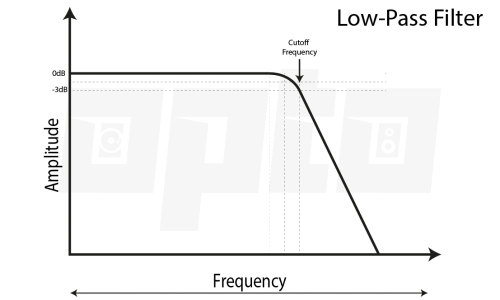
Another common type of filter is the high-pass filter, which passes high frequencies and blocks low frequencies. Also known as the low-cut filter.
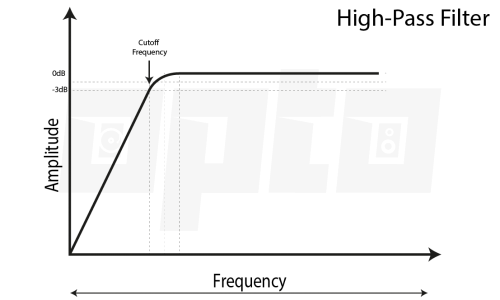
The third type of filter is made by combining both lowpass and highpass filters to form a band-pass filter. A bandpass filter passes only one band of frequencies. Subtractive synthesis gets its name from these filters because they subtract frequency content from the oscillators.
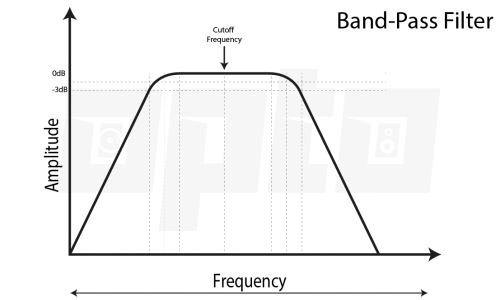
Alright, so a low-pass filter passes low frequencies. But what frequencies does it pass and what frequencies get filtered out? This depends on what is called the cutoff frequency. The cutoff frequency is the point at which a filter starts to work. If you set the cutoff frequency of a low pass filter at 200 Hz it will attenuate frequencies above 200Hz and pass frequencies below 200Hz.
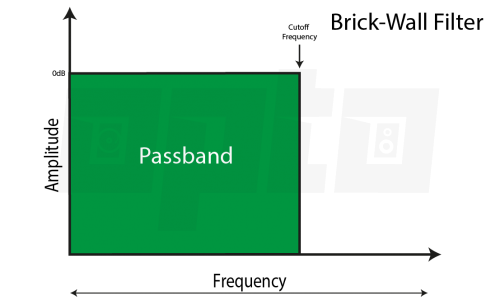
An ideal filter lets frequencies up to 200Hz pass unaffected and completely removes every frequency from 201Hz and up. This kind of brick wall filter is purely theoretical however and doesn’t exist in our practical world.
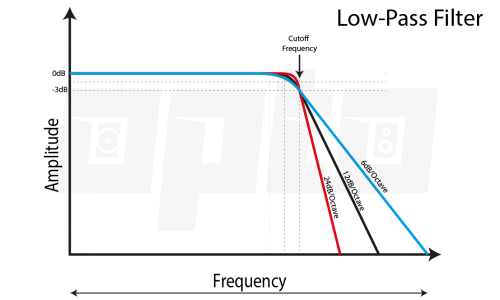
Most filters smoothly attenuate frequencies above or below the cutoff frequency. The steepness, or slope of a filter, is often described in terms of dB per octave. Common filter types are 6dB/octave, 12dB/octave, and 24dB/octave. Sometimes filters are also described by their number of poles. This originated from analog electronics where one pole is equal to a 6dB/oct filter. 2 poles are simply two filters in series, equal to a 12dB/oct filter. So a 4-pole filter is equal to a 24dB/oct filter.
I’ve written above that a filter starts ‘working’ at the cutoff frequency, but this is not entirely true. The filter starts attenuating a little bit before the cutoff frequency. The cutoff frequency of a filter is actually at what is called the 3dB down point. This has to do with the behavior of analog filters and has since been adapted to digital filters as well.
Resonance
In addition to the filter cutoff frequency, you also get access to a resonance control. Filter resonance is used to emphasize the cutoff frequency by boosting frequencies at the cutoff point. Some filters allow you to set the resonance so high that the filter will start to oscillate by itself. The amplification is so extreme that it generates a sine wave at the cutoff frequency.
In addition to emphasizing the cutoff frequency, a higher resonance also steepens the slope of the filter to compensate for the boost. Resonance is sometimes labeled as Q, or the quality factor.

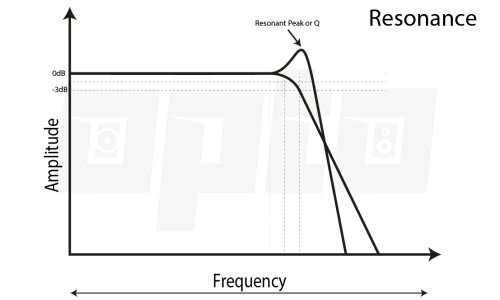
Resonance is often heard in Acid House basslines which were made on the classic 303 bass synthesizer by Roland. Using resonance with a highpass can also be helpful to boost low frequencies when the filter cutoff is set to a low cutoff point as is often done on the famous Korg MS20 synthesizer.
Resonance can also be used in combination with a bandpass filter. The cutoff frequency of a bandpass filter lies in the center position. When you emphasize the cutoff frequency, the bandpass filter also gets narrower at the same time, while becoming wider with a lower resonance setting. The same is true for bell filters, which you’ll find in any parametric equalizer.
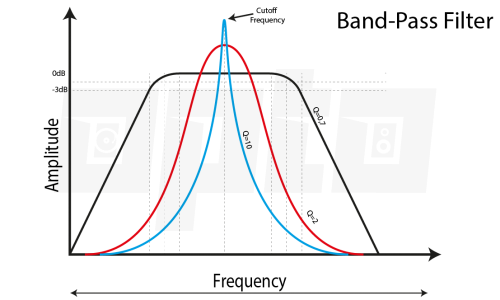
Drive
Some synthesizers also provide a drive function. This adds some subtle saturation or distortion to emulate analog filter designs. Both Sylenth1 and Serum have this function.

Key Tracking
The final important parameter of filters is key tracking. This function allows the filter cutoff frequency to follow the notes you play. Key tracking is often labeled as a percentage between -100% and +100%. If you set key tracking to +100% the filter cutoff will move up the higher you play on the keyboard. This is useful if you want higher notes to be heard as clearly as lower notes. By using key tracking of -100% the filter cutoff will decrease if you play higher on the keyboard. This will darken the sound as you play higher notes.

You can hear key tracking in action by setting the resonance to it’s maximum position so it starts to oscillate. If you now set key tracking to -100% or +100% you will hear the notes change as you move up and down the keyboard. With some synthesizers, this means you can use the filter as an extra oscillator!
Lowpass, highpass, and bandpass filters are the 3 most used filter types in synthesizers. Other filters exist, like notch filters and comb filters, but most filters are different emulations of their analog versions.
For a more in-depth look into filters, check out this article where I compare low-pass filters & high-pass filters, along with some additional technical information about phase and its practical use cases.

